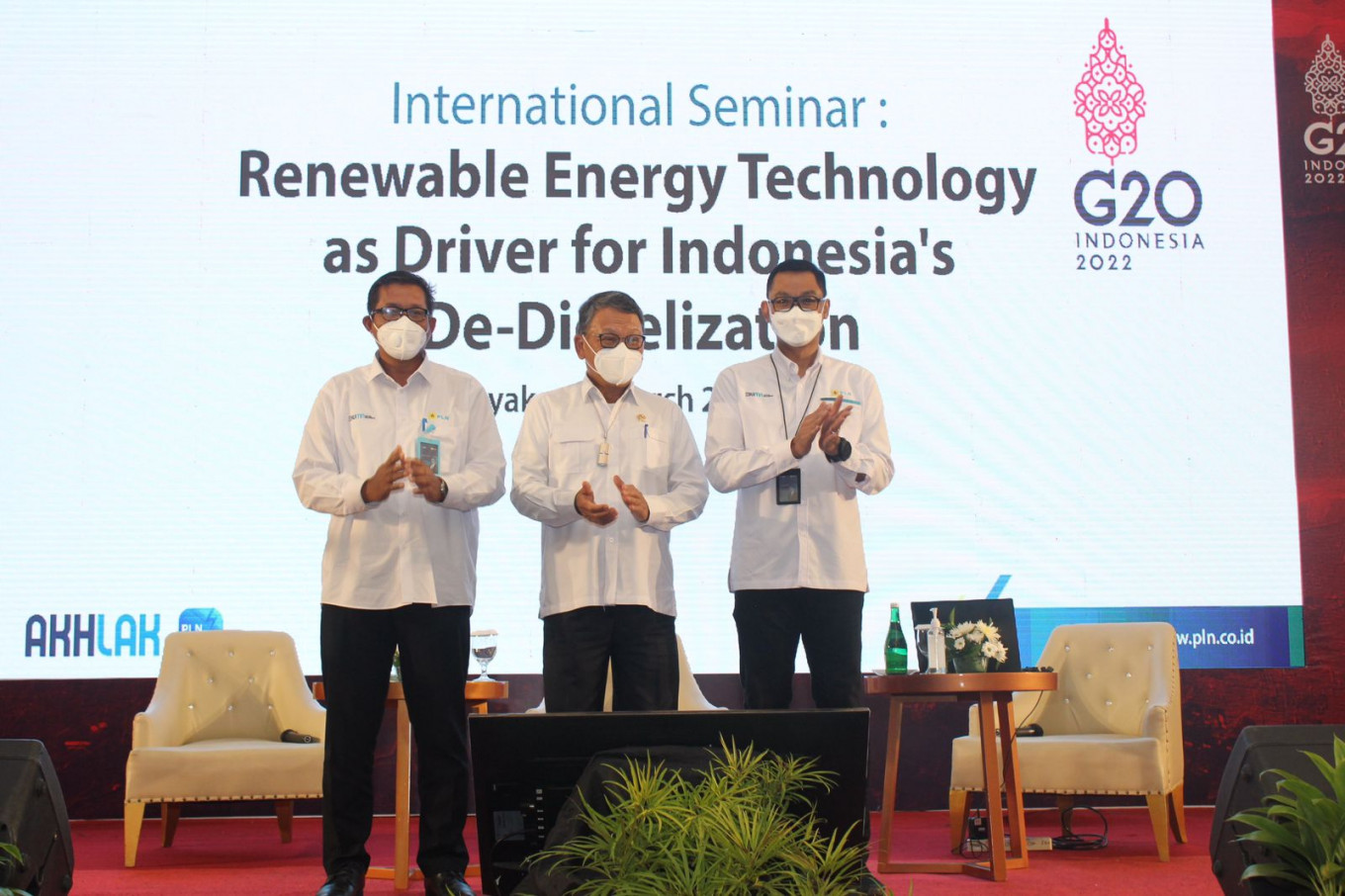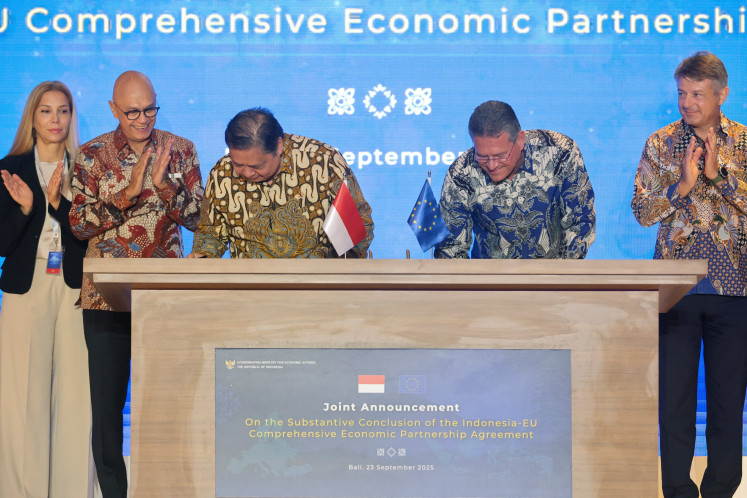Popular Reads
Top Results
Can't find what you're looking for?
View all search resultsPopular Reads
Top Results
Can't find what you're looking for?
View all search resultsThe power of energy efficiency to achieve net-zero emissions
It seems that Indonesia's energy transition has primarily focused on ambitious, complex and capital-intensive projects on the supply side, such as the construction and early retirement of power plants.
Change text size
Gift Premium Articles
to Anyone
T
he jargon of "energy transition" has gained widespread attention and become a prominent topic in discussions, news and events related to Indonesia's energy sector. While the focus initially revolved around achieving 23 percent renewable energy by 2025, the new trend in the energy and climate-related discussions is shifting toward attaining net-zero emissions (NZE).
Indonesia officially launched its NZE 2060 target at the 26th Conference of Parties (COP26) of the United Nations Framework Convention on Climate Change in Glasgow, followed by the COP27 in Egypt, during which the state electricity company PLN announced strategies to achieve NZE 2060. Significant initiatives such as the Energy Transition Mechanism (ETM) and the US$20 billion Just Energy Transition Partnership (JETP) Joint Statement signed at the Group of 20 Summit in 2022, aimed at facilitating the early retirement of coal-fired power stations, have further promoted this transition.
However, it seems that Indonesia's energy transition has primarily focused on ambitious, complex, and capital-intensive projects on the supply side, such as the construction and early retirement of power plants. Unfortunately, the emphasis on demand-side energy management, specifically energy efficiency (EE) and conservation, has been overlooked.
EE involves efforts to reduce wasteful energy consumption, thereby reducing costs. These efforts can be implemented by various stakeholders, including households, commercial buildings, industries and the government.
Investments in EE range from promoting behavioral changes and raising awareness to adopting energy-efficient appliances like LED lighting, chillers and cooling systems, and energy-monitoring devices. While these initiatives may seem small in scale compared with building new power plants, a widespread movement toward energy conservation among consumers can significantly contribute to achieving NZE.
It is unfortunate that EE policies and measures are often overshadowed by renewable energy and electric vehicles. In fact, there are three key factors that can make EE work effectively in Indonesia.
First, robust government policies and financial tools, known as market-based instruments (MBIs), need to be established to enable the market. These MBIs can serve as incentives or disincentives to drive the primary market and related ecosystems. For example, regulations on green buildings and mandatory energy audits can stimulate the growth of green and low-carbon buildings in Indonesia.
By implementing these regulations effectively, the government can also promote the development of EE ecosystems, including technology suppliers, energy service companies (ESCOs), green building consultants, energy management auditors, certification agencies and financial institutions.
Singapore provides a relevant case study, as it has prioritized EE in its development through the Singapore Green Building Master Plan (SGBMP), which aims to achieve specific targets related to green building certification, super low energy buildings and energy efficiency. The Singaporean government has created a market for EE by offering grants, subsidies, loans and strict regulations related to permits for new buildings.
In Indonesia, the government has issued green building regulations under the Public Works and Housing Ministerial Regulation No. 2/2015. However, the enforcement of these regulations is primarily delegated to local governments, leading to a lack of consistent implementation due to their limited capacity. Internationally recognized green building certification systems such as Green Mark, EDGE and LEED are also adopted by office buildings in key cities such as Jakarta.
However, rather than being mandated by the government, these certifications are frequently pursued voluntarily by building owners to boost property value and marketability thus making them attractive for prospective tenants and clients who are concerned about sustainability. As a result, there are not enough government incentives to encourage compliance and implementation.
While the Energy and Mineral Resources Ministry has implemented the Subroto Award to recognize energy efficiency achievements, a more comprehensive and impactful policy approach is needed in the EE sector.
Second, the inclusion of EE in the national energy transition strategy. Despite the hype of the JETP, EE seems to receive insufficient attention compared with other investment priorities such as coal retirement and renewable energy. Thus, as the JETP comprehensive investment and policy document is being prepared, it is worth giving EE some due and including it as an integral part of the transition.
Considering that the most cost-effective energy investment and emission reduction is to avoid unnecessary energy generation and consumption, EE deserves greater emphasis.
Third, leading by example. The government should lead by example by incorporating EE principles in major infrastructure projects. All public buildings, including airports and government facilities, should be constructed with a low carbon footprint.
Green building certification can serve as a valuable benchmark for these projects. Engaging energy management specialists is vital to ensuring the EE of such infrastructure. This approach can be extended to the development of Nusantara, the future national capital, and its supporting infrastructure.
Lastly, the pricing of energy in the market is a crucial consideration when making EE work. Without reflecting the real economic costs, investments in EE may seem less attractive. However, other climate-related perspectives can also provide motivations for pursuing EE. It is crucial to recognize that the energy transition goes beyond building power plants and focusing primarily on supply-side management, as Indonesia has done thus far.
To achieve a successful transition toward NZE, greater attention, and proactive measures should be considered in moving toward EE.
***
Naufal Rospriandana is an analyst at the Climate Policy Initiative and Ery Wijaya is country manager of Green Building Partnership Network. The views expressed are their own.









